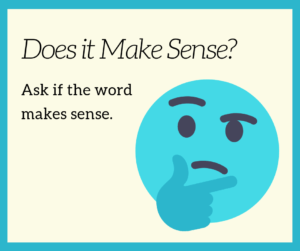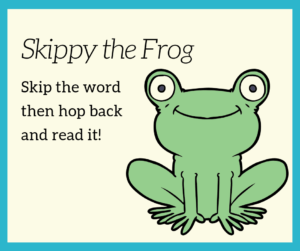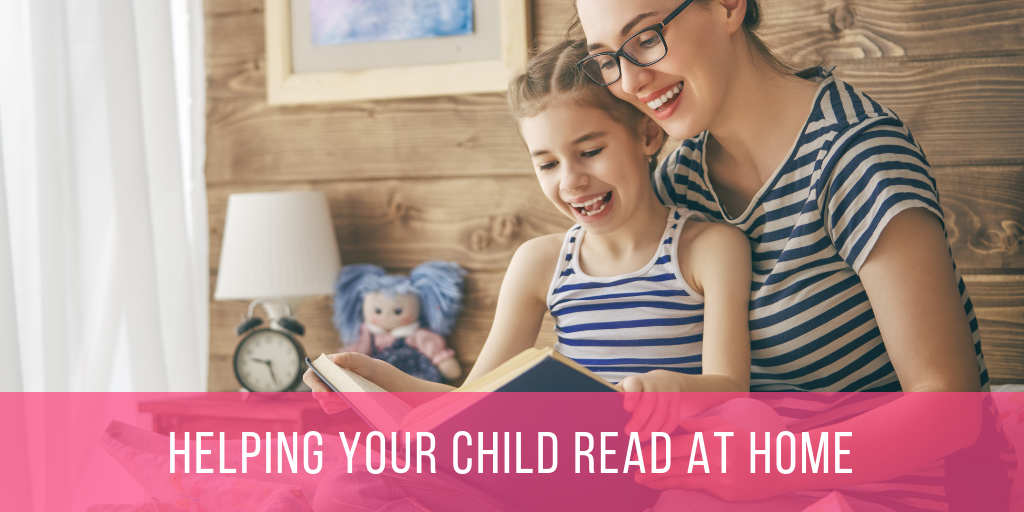How can I help my child with their reading at home? So many parents struggle with this question. The idea of teaching a child to read becomes even more mystical as adults often cannot remember their own experiences learning how to read! We so easily forget that it took years of practice, determination and specific reading strategies to become successful, independent readers- becoming competent readers didn’t just “happen” to us at a certain age. Have you ever tried to learn a 2nd language as an adult? It can be an incredibly gruelling, challenging, and slow process. Learning a second language as an adult is a great example as it brings us back to empathizing with our children about the complex process involved in reading acquisition.
Teaching children how to read seems even more difficult as most of us cannot remember how WE learned to read. Parents often rely on the standard prompt of ‘sounding it out’ strategy. Sounding out words IS a strategy that teachers use in class, but it often only applies to beginning readers (such as when reading simple CVC “consonant/vowel/consonant” words) and it is only one strategy of many! In fact, the ultimate goal of reading is to gain information, so it is important to focus FIRST on meaning and what makes sense before focusing on the visual aspect of the word.
Here are some strategies to expand your toolbox of reading prompts when your child is stuck in their reading:
What makes sense?
 This is a foundational strategy as it reinforces the idea that reading needs to make sense! When your child encounters anunknown word it is often best to first ask, “Hmm…I wonder what would make sense here?”. This question will prompt your child to focus first on meaning and paying attention to what is happening in the text.
This is a foundational strategy as it reinforces the idea that reading needs to make sense! When your child encounters anunknown word it is often best to first ask, “Hmm…I wonder what would make sense here?”. This question will prompt your child to focus first on meaning and paying attention to what is happening in the text.
For example, if the sentence reads “The big blue truck is on the road.” and your child is stuck on the word ‘road’, ask your child to think about “what would make sense?”. “What is the truck on?” If they insert the word street, then remind your child to think about what makes sense as well as to look at the letters in the word. Be sure to always ask your child to confirm that the word they inserted fits the word visually (begins and ends the same).
Skippy the Frog
 This is a key strategy for non-fiction and more complex texts. As vocabulary gets more challenging, this is a very useful strategy to employ. When using Skippy the Frog, prompt your child to skip the word they’re struggling with and read on. Your child can then finish the sentence or paragraph, and then go back to the unknown word to think about what would make sense in the context of the story.
This is a key strategy for non-fiction and more complex texts. As vocabulary gets more challenging, this is a very useful strategy to employ. When using Skippy the Frog, prompt your child to skip the word they’re struggling with and read on. Your child can then finish the sentence or paragraph, and then go back to the unknown word to think about what would make sense in the context of the story.
For example, when reading about a text about bears, the sentence may read “Bears hibernate in the winter”. ‘Hibernate’ is a long, tricky word to read, but if a child has previous knowledge about bears, they most likely know about hibernation in the winter. After completing the sentence, they can go back and see if the word hibernate ‘looks right’ (it starts with an H and there is a T near the end) and ‘makes sense’ (Yes! Bears DO hibernate in the winter, so that word makes sense!). This strategy pulls together two strategies by ensuring that children are thinking about meaning, but also looking at the word closely to ensure that it fits visually.
Chunky Monkey
 Beginning in Kindergarten and continuing through the early years, children begin to learn and recognize digraphs (two letters that work together to make an entirely different sound, such as sh, ch, and ph), blends (two or three letters that blend their sounds together, such as st, bl, and ing) and common vowel patterns, such as er/ir/ur and ar. Again, as words get longer and more complex it is important for children to recognize the smaller chunks (digraphs, blends, and vowel patterns) within a larger word. Additionally, finding small words within larger words also helps. Chunky Monkey encourages children to break up larger words into smaller, manageable chunks and then to blend the chunks together into a word that sounds right. This strategy is especially useful for compound words (such as ‘classroom’) and words with prefixes or suffixes (such as ‘replay’ or ‘brightly’).
Beginning in Kindergarten and continuing through the early years, children begin to learn and recognize digraphs (two letters that work together to make an entirely different sound, such as sh, ch, and ph), blends (two or three letters that blend their sounds together, such as st, bl, and ing) and common vowel patterns, such as er/ir/ur and ar. Again, as words get longer and more complex it is important for children to recognize the smaller chunks (digraphs, blends, and vowel patterns) within a larger word. Additionally, finding small words within larger words also helps. Chunky Monkey encourages children to break up larger words into smaller, manageable chunks and then to blend the chunks together into a word that sounds right. This strategy is especially useful for compound words (such as ‘classroom’) and words with prefixes or suffixes (such as ‘replay’ or ‘brightly’).
For example, take a look at the word ‘information’. It can be broken up into the words ‘in’ and ‘form’ as well as the suffix ‘-tion’. Begin blending the words and chunks together and the final word ‘information’ can be created!
I encourage you to try these strategies at home and I will share Part 2 of my blog with a few more reading strategies next week! Stay tuned!
